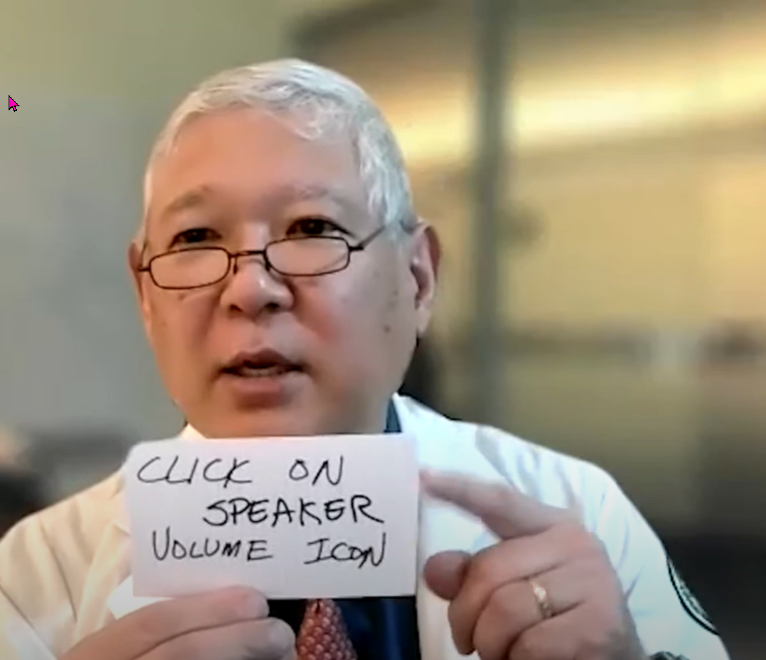Newsletter
Finding the ‘Safe Spot’ in Virtual Care Delivery
Aug 29, 2023
“Did something go right? The signs that something could go wrong...were there from the start.”
As the COVID-19 pandemic quickly took hold in 2020 and then gradually started letting go, many in health care worried that a sudden lunge into online patient interactions would lead to a jump in adverse events and a flood of lawsuits.
That hasn’t exactly happened. Yet. CRICO’s national medical professional liability database, called Candello, has noted a meaningful recent uptick in COVID-related claims. It’s not yet clear the extent to which virtual patient interactions contributed to the adverse events that led to those claims.
Statutes of limitations afford plaintiffs multiple years to bring a claim forward, creating a significant lag time between the triggering event and any subsequent legal action. Federal and state rules and waivers are still in flux. Currently, cases in the CRICO system that arose from virtual care are only in single digits.
Although a flood of claims may be around the corner, this trickle currently does not support that prediction.
Did something go right? The signs that something could go wrong during virtual care encounters were there from the start. A survey of U.S. health care practitioners in late March 2020 indicated that more than half the respondents were using telemedicine and had not before the pandemic. A New York Times headline described the arrival of telemedicine in the United Kingdom at the start of the pandemic as “10 Years of Change in One Week.” Medicare reported a leap from next to zero fee-for-service telemedicine users per week to more than 1.6 million users one month after compensation waivers went into effect.
Surely the professionals standing up new virtual care capabilities in hospitals and practices put effort into safety measures. But major challenges included getting accustomed to the technology, an inability to perform a full physical examination, and not being able to readily obtain labs and imaging.
One collaborative effort by Candello and The Doctors Company (TDC) used video interviews and dramatizations with actors to create a free five-part video series, titled “What Not to Do: Telehealth Lessons Learned.” That series, which guides practitioners around potential virtual visit risks, recently won a Gold Award from the Insurance Marketing and Communication Showcase Awards.
“The thing we really worry about most is missing a diagnosis,” says David Feldman, MD, during the Clinical Module of the video series. Dr. Feldman is CMO for The Doctors Company. “And the reason we say that is we know in the malpractice world the few lawsuits we’ve seen around telemedicine, many of them, three-quarters of them, have been about diagnostic errors, something that we worry about even in in-person visits.”
In each of the CRICO/TDC videos, experts from both organizations offer advice about top patient safety and liability risk, including technical issues, legal precautions, equity, unexpected events during visits, and unique clinical considerations.
Some of the advice from that video series emerged through the activities of the Academic Medical Center Patient Safety Organization (AMC PSO) in 2021. A brief survey of PSOs identified the top three patient safety concerns related to virtual care delivery:
- Diagnostic errors
- Failure of post-visit follow up
- Technology issues related to disparities in access to virtual care
A convening of 30 PSOs across the country later resulted in an advisory and a call for more robust safety reporting to identify and capture adverse outcomes and near-miss events where virtual care was a contributing factor. Later in 2021, the AMC PSO published “Patient Safety Guidance for the Virtual Visit, Managing Risk in a New Care Setting.” The guidance deconstructs delivery of virtual visits, then suggests where to focus safety efforts before, during, and after the appointment.
Concern over virtual care and diagnostic error will likely be fueled by a June 2023 study from the Johns Hopkins Center for Diagnostic Excellence, published in the British Medical Journal of Quality and Safety. Their research estimated that 800,000 people die or are permanently disabled annually from errors in the diagnostic process.
We expect to see increased scrutiny of virtual care as a risk for diagnostic error. According to most analysts, telemedicine is here to stay, and its use will continue to increase. Future clinicians and staff still need specific training in the logistics of the technology and clinical navigation of remote evaluations. Patients continue to find the convenience of virtual care outweighs other factors, but their expectation for positive outcomes will likely remain. A focus on safety for clinicians and their patients will be required along the way.
Resources:
What Not to Do: Telehealth Lessons Learned. [video
series]
Five video learning modules covering telehealth quality
assurance in the areas of Clinical evaluation, Equity of access, Unexpected
events, Legal issues, and Technical considerations.
Patient Safety Guidance for the Virtual Visit
The culmination of the AMC PSO task force that identified a
need to address this unprecedented challenge and formed the Virtual Care Task
Force, comprising providers from a variety of disciplines with interest and
expertise in virtual care and patient safety (and a patient and family advisory
council representative).
The State of Telehealth Before and After the COVID19
Pandemic
Analysis from Kaiser Permanente Northern California’s Dr.
Julia Shaver’s assessment of access, acceptance by patients/providers, and
on-going needs.
HHS Fact Sheet: End of the Covid-19 Public Health
Emergency
Explanation of rule changes, consequences of the gradual
end of Medicare/Medicaid waivers, what will change and what will not be
affected by the end of the public health emergency in 2023.
Burden of Serious Harms from Diagnostic Error in the USA
Cross-sectional analysis of US-based nationally
representative observational data. Conclusions included an estimated 795,000
Americans become permanently disabled or die annually because of misdiagnosis,
across care settings.
Understanding a new technology is important. You should be prepared to help the patient ahead of time.
One of the videos from the Telehealth Series.
Recent Issues
I’ll take some cranberries and a helping of family history, please


The Third-Party Risk Factor



